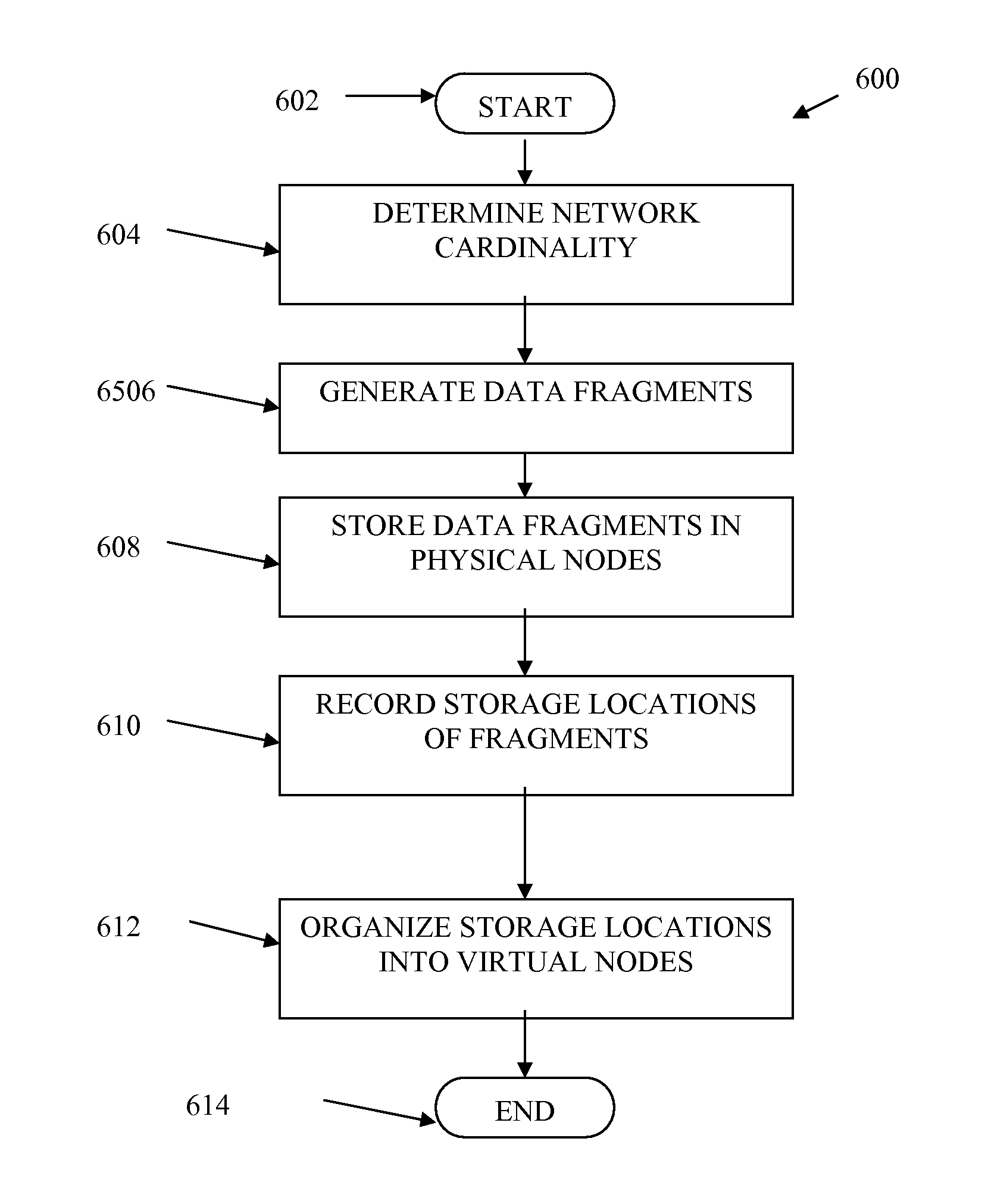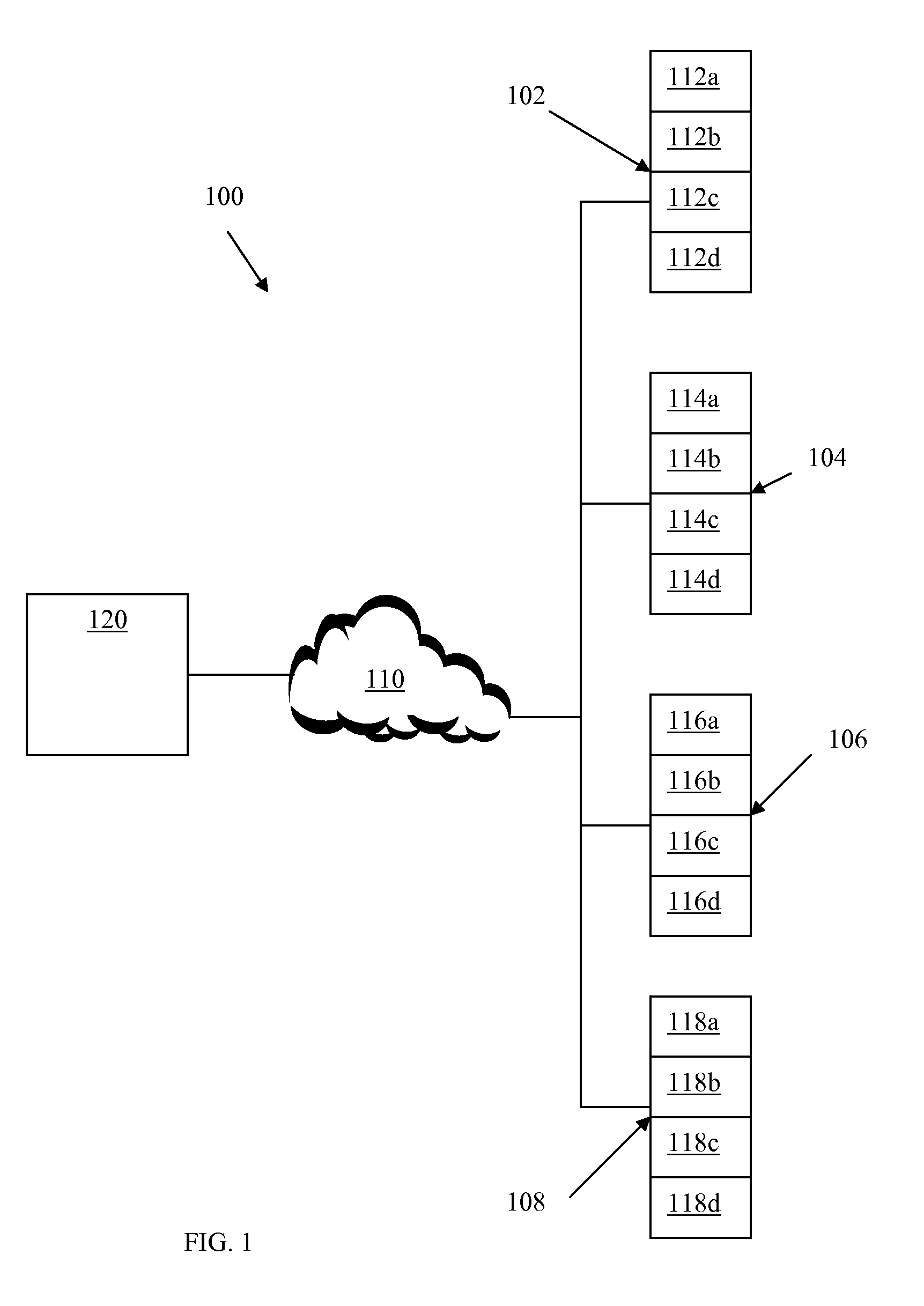Method and system for a self managing and scalable grid storage
a grid storage and self-management technology, applied in the field of storage, can solve the problems of complex storage, new types of scalability issues, and the management of this complex infrastructure has become a management and interoperability nightmare, and achieve the effects of optimizing performance through smart caching, eliminating duplicate data, and avoiding hot spots
- Summary
- Abstract
- Description
- Claims
- Application Information
AI Technical Summary
Benefits of technology
Problems solved by technology
Method used
Image
Examples
Embodiment Construction
[0024]The inventive grid storage system provides a resilient architecture based on the assumption that hardware failures inevitably will occur in any large-scale system. Rather than attempt to prevent these failures at high cost through various hardware hardening techniques, the inventive grid storage technique handles hardware failure by relying on a large number of standardized commodity server nodes that can be replaced easily. The inventive grid storage system protects data through the high resiliency and self-healing capacity implemented by its management process. The inventive grid storage technique manages data with low storage overhead and full automation thus ensuring low system cost as well as low operating cost.
[0025]From a storage administrator's perspective, the inventive grid storage technique's objective is to provide the simplicity needed to be able to manage petabytes of data in today's storage environments. The inventive grid storage technique does not merely hide ...
PUM
 Login to View More
Login to View More Abstract
Description
Claims
Application Information
 Login to View More
Login to View More - R&D
- Intellectual Property
- Life Sciences
- Materials
- Tech Scout
- Unparalleled Data Quality
- Higher Quality Content
- 60% Fewer Hallucinations
Browse by: Latest US Patents, China's latest patents, Technical Efficacy Thesaurus, Application Domain, Technology Topic, Popular Technical Reports.
© 2025 PatSnap. All rights reserved.Legal|Privacy policy|Modern Slavery Act Transparency Statement|Sitemap|About US| Contact US: help@patsnap.com



